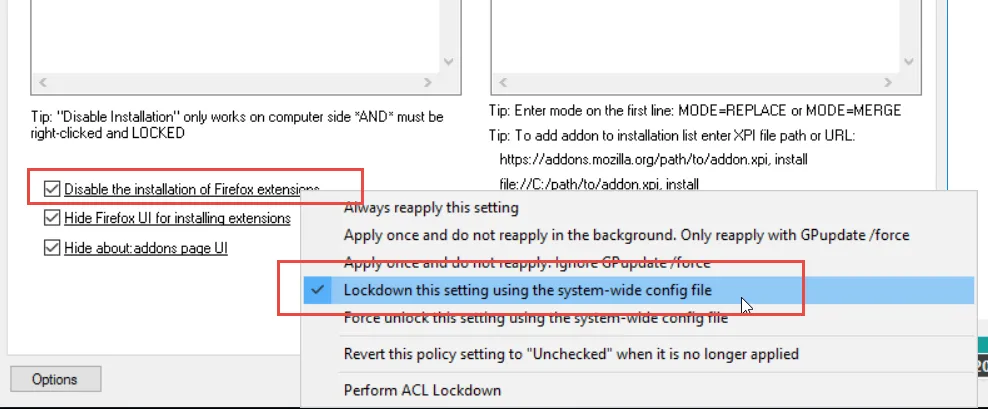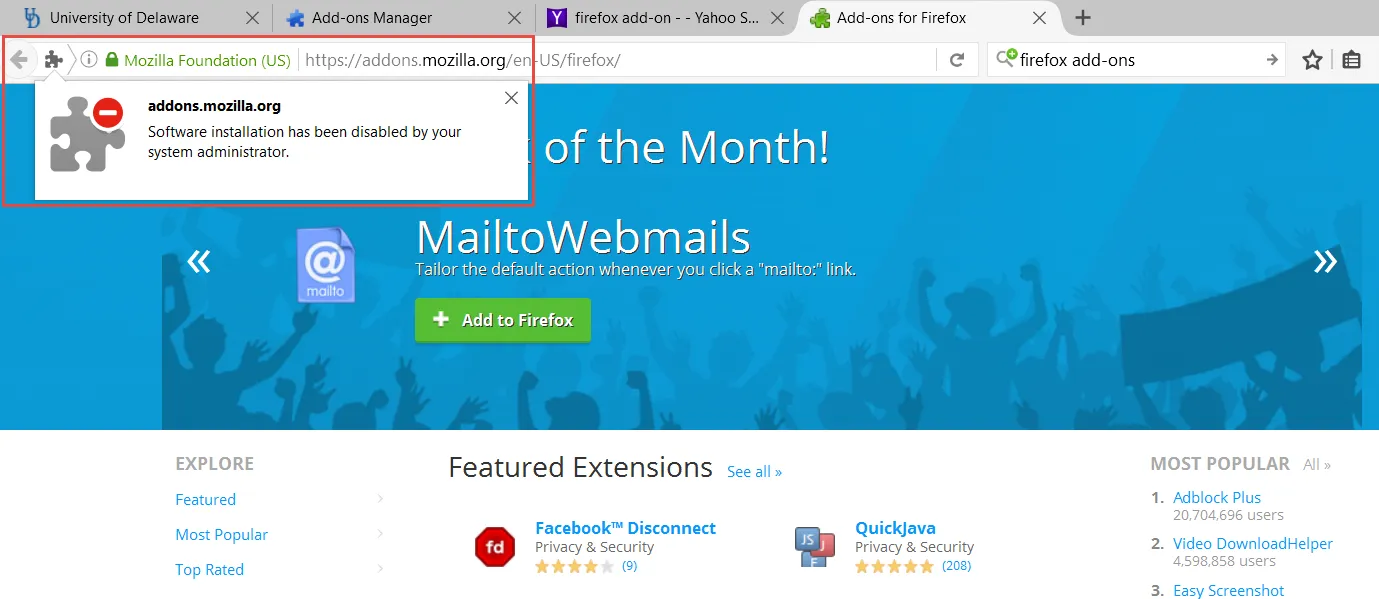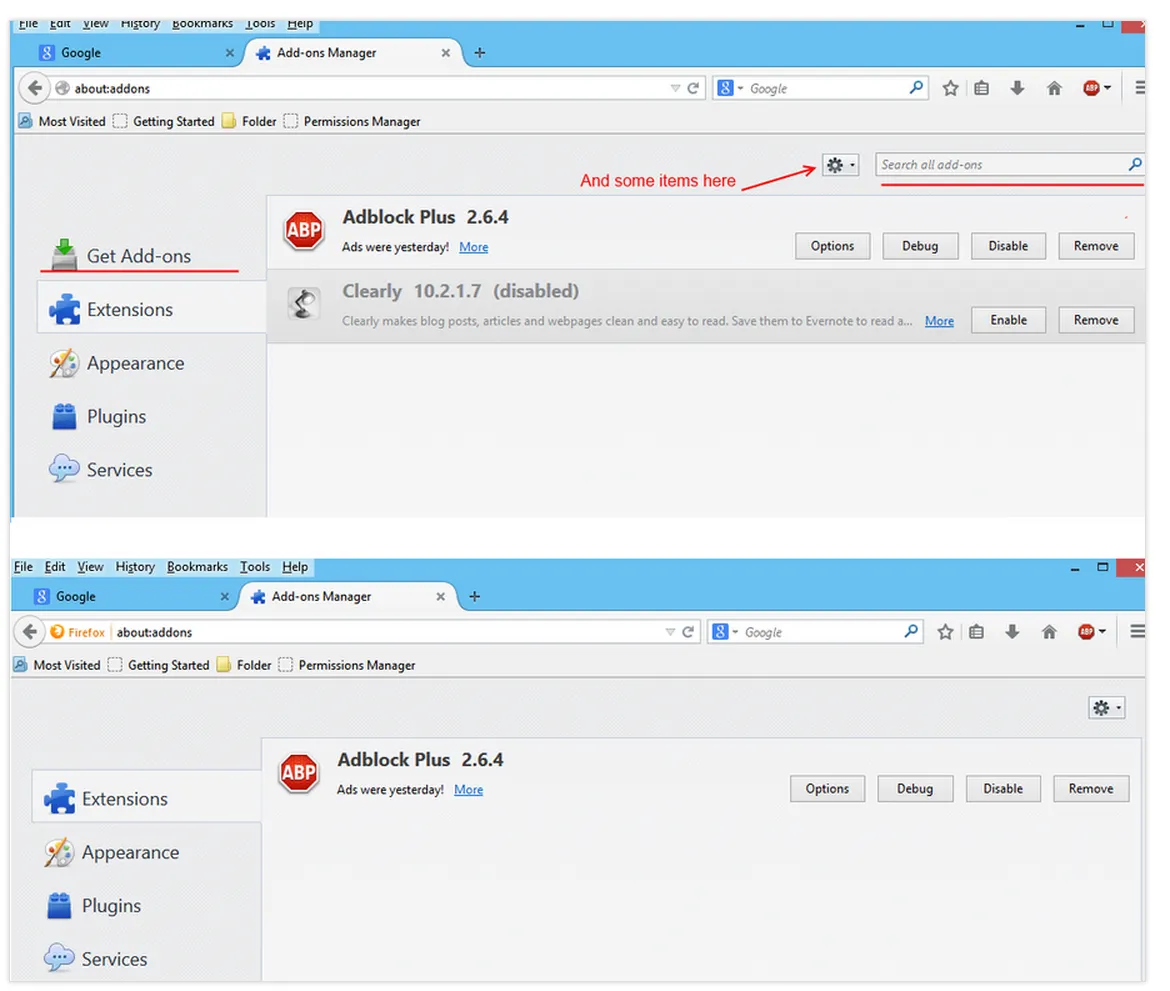Tips and Tricks
Endpoint Policy Manager has some extra powers to prevent users from managing and installing additional add-ons. First, if Endpoint Policy Manager is set to disable an add-on (or a whole category of add-ons), those add-ons are AUTOMATICALLY hidden from the user so they cannot re-enable them.
CAUTION: It is possible that a particularly clever user could temporarily re-enable the add-on.
The Add-ons section in the Firefox AppSet has the following extra special checkboxes:
- Disable the installation of Firefox extensions: This will disable installation from all sources EXCEPT Add-ons Manager.
- Hide Firefox UI for installing extensions: This removes some elements from the Add-ons Manager user interface (UI) to make it harder for users to work around your settings.
- Hide about:addons page UI: This completely blanks out the add-ons page.
You can see these checkboxes below in Figure 25.

Figure 25. Disabling and hiding add-ons.
NOTE: If you select "Disable the installation of Firefox extensions" you must right-click the setting and specify "Lockdown this setting using the system-wide config file" or it will not function. The "Lockdown this setting using the system-wide config file" flag is only available when the AppSet is used on the Computer side. This effectively means that ALL users on the computer are blocked from installing Firefox extensions manually.
The result of selecting "Disable the installation of Firefox extensions" is that when users attempt to install any extension, in any manner, they are blocked, as shown in Figure 26.

Figure 26. A disabled add-on.
The result of selecting the checkbox, "Hide Firefox UI for installing extensions," is shown in Figure 27 below. This makes it more difficult for user to use the Add-ons Manager and manipulate settings.

Figure 27. Before (above) and after (below) hiding the Firefox UI for installing extensions.